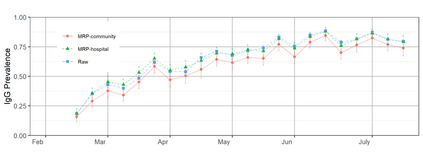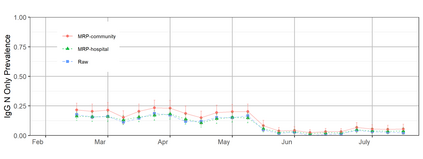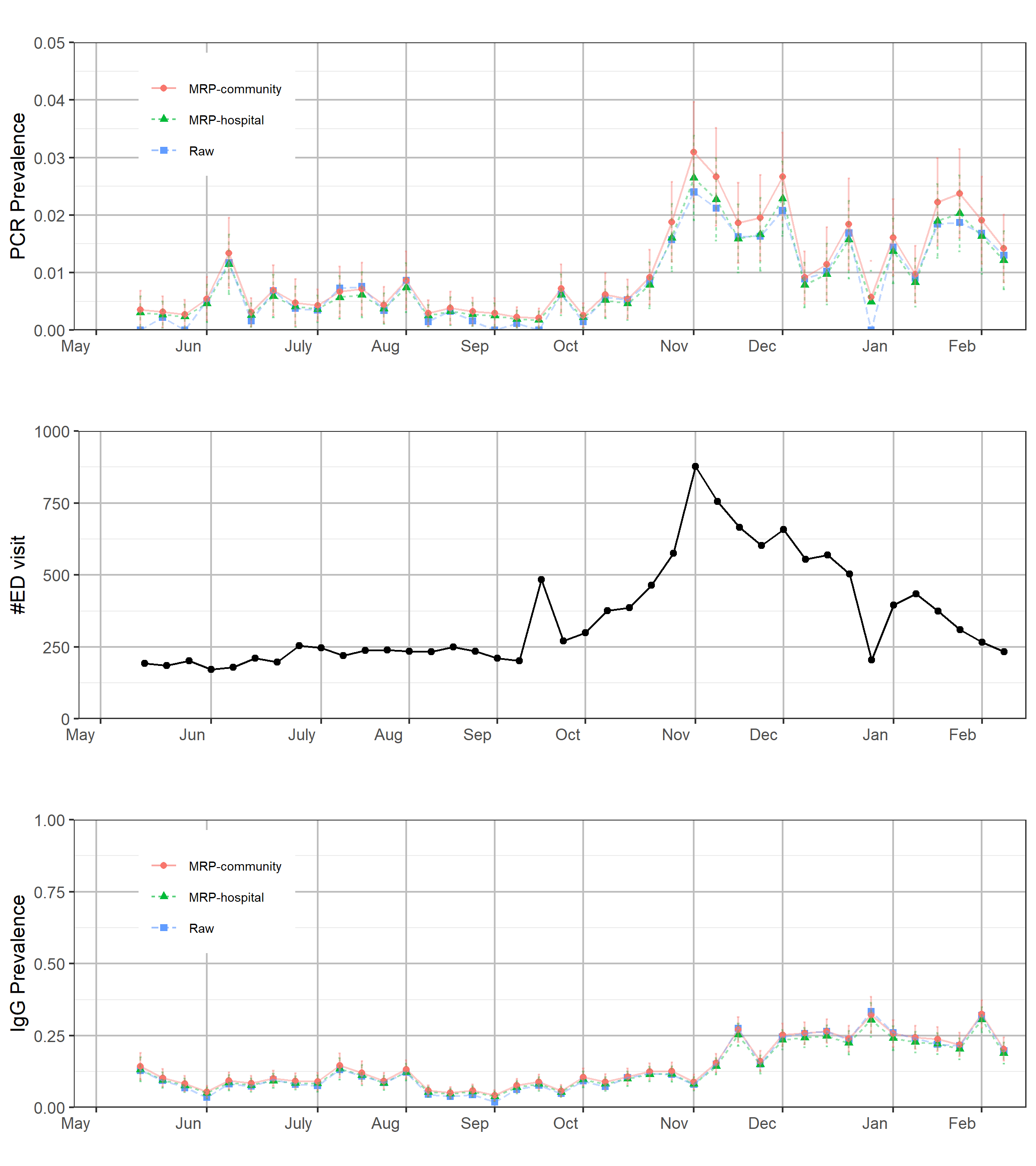Explicit knowledge of total community-level immune seroprevalence is critical to developing policies to mitigate the social and clinical impact of SARS-CoV-2. Publicly available vaccination data are frequently cited as a proxy for population immunity, but this metric ignores the effects of naturally-acquired immunity, which varies broadly throughout the country and world. Without broad or random sampling of the population, accurate measurement of persistent immunity post natural infection is generally unavailable. To enable tracking of both naturally-acquired and vaccine-induced immunity, we set up a synthetic random proxy based on routine hospital testing for estimating total Immunoglobulin G (IgG) prevalence in the sampled community. Our approach analyzes viral IgG testing data of asymptomatic patients who present for elective procedures within a hospital system. We apply multilevel regression and poststratification to adjust for demographic and geographic discrepancies between the sample and the community population. We then apply state-based vaccination data to categorize immune status as driven by natural infection or by vaccine. We have validated the model using verified clinical metrics of viral and symptomatic disease incidence to show the expected biological correlation of these entities with the timing, rate, and magnitude of seroprevalence. In mid-July 2021, the estimated immunity level was 74% with the administered vaccination rate of 45% in the two counties. The metric improves real-time understanding of immunity to COVID-19 as it evolves and the coordination of policy responses to the disease, toward an inexpensive and easily operational surveillance system that transcends the limits of vaccination datasets alone.
翻译:对社区一级免疫性血清阳性的全面全面了解对于制定减轻SARS-COV-2的社会和临床影响的政策至关重要。公众可获得的疫苗接种数据经常被援引为人口免疫的替代物,但这一指标忽视了自然获得的免疫性的影响,而这种免疫性在全国家和全世界差异很大。如果不对人口进行广泛或随机抽样调查,通常无法准确测量自然感染后的持续免疫性。为了能够追踪自然获得的免疫性和疫苗引起的免疫性免疫性,我们根据常规医院检测,建立了一个合成随机替代物,用于评估抽样社区内Immunoglobulin G(IgGGG)的免疫性全面免疫性(IgGGG)流行率。我们的方法分析病毒性IgG测试了在医院系统内提出选择程序的无症状病人的数据。我们采用了多层次的回归和移植,以调整抽样和社区人口之间的人口和地理差异。然后我们采用基于国家的免疫数据数据,将自然感染或疫苗引起的免疫性状态分类。我们用经核实的血液和症状性疾病发病率临床测量模型验证了模型,以显示这些实体的预期的生物免疫性比值比标准、比率和比率。






